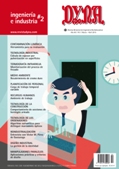HYBRID MODELLING FOR FAILURE DIAGNOSIS AND PROGNOSIS IN THE TRANSPORT SECTOR. ACQUIRED DATA AND SYNTHETIC DATA.
Keywords:
mantenimiento, monitorización de la condición, detección, prognosis, transporte, ferroviario, seguridad, modelización híbrida, modelización de fallo, datos sintéticosAbstract
Safety in transport is a key. Railway and aerospace sectors have a need for ways to predict the behaviour of trains and aircraft, respectively. With this information, maintenance tasks for the correct operation of the assets can be carried out, reducing the number of failures that can cause an accident. However, the lack of enough data of the faulty state of those systems makes this to be difficult. Because of that either hidden faults or unknown faults can occur. As regulations in transport are very restrictive, components are usually substituted in early states of their degradation, which implies a loss of useful life of those components. In this article a methodology to overcome this limitation is presented. This methodology consists in the fusion of data obtained from two sources: data acquired from the real system, and synthetic data generated using physical models of the system. These physical models should be constructed in such a way that they can reproduce the main failure modes that can occur in the modelled system. This data fusion, that creates a hybrid model, not only allows to classify the condition of the system according to the aforementioned failure modes, but also to define new data that do not belong to any of those failure modes as a new failure mode, improving diagnosis and prognosis processes.Downloads
Published
2015-03-01
Issue
Section
ARTICULOS

